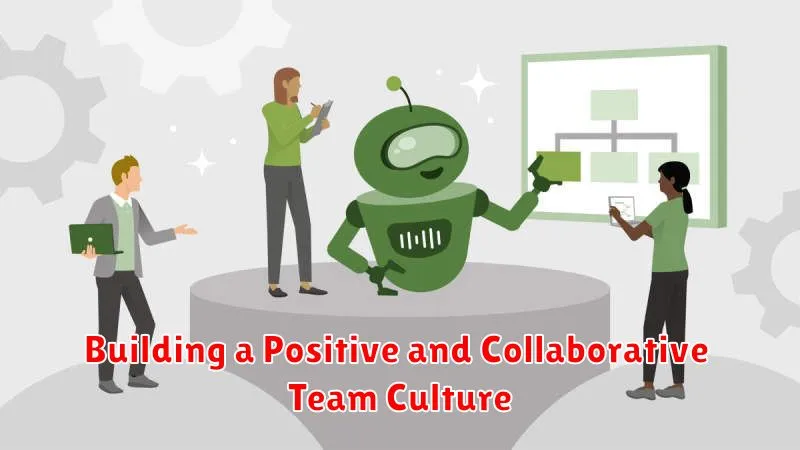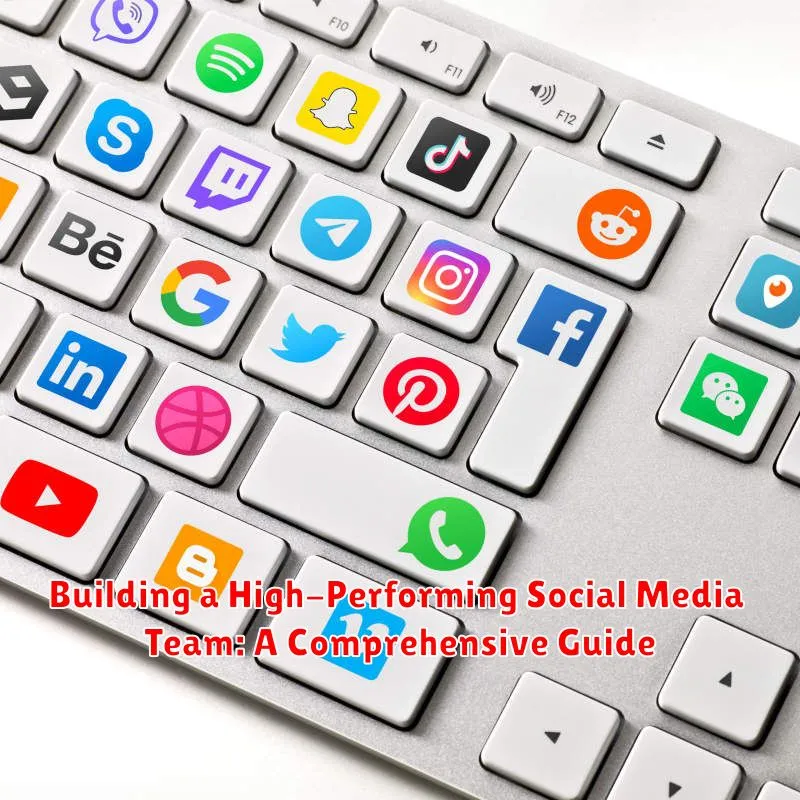In today’s digitally-driven world, a high-performing social media team is crucial for any organization aiming to establish a robust online presence and achieve its marketing objectives. This comprehensive guide provides a detailed roadmap for building, managing, and optimizing a social media team that drives engagement, fosters brand growth, and delivers measurable results. From recruitment and training to performance measurement and ongoing development, this guide will equip you with the knowledge and strategies needed to create a truly effective social media team.
Whether you are building a social media team from scratch or looking to enhance your existing team’s performance, this guide covers every aspect of creating a high-performing social media team. Learn how to define clear roles and responsibilities, establish effective workflows, cultivate a collaborative team culture, and leverage the latest social media tools and techniques. We’ll explore strategies for content creation, community building, social listening, and performance analysis, empowering you to build a social media team that consistently exceeds expectations and contributes significantly to organizational success.
Defining Your Social Media Goals and Objectives
Before assembling your team, clearly define what you want to achieve through social media. Establishing concrete goals and objectives is paramount to guiding your team’s efforts and measuring success. Without a clear roadmap, your team may lack direction and focus.
Start by identifying your overall business objectives. Are you aiming to increase brand awareness, drive website traffic, generate leads, or boost sales? Your social media goals should directly support these broader business aims.
Once you have identified your overarching goals, break them down into measurable objectives. For instance, if your goal is to increase brand awareness, a corresponding objective might be to increase follower count by 20% within the next quarter. Using the SMART framework (Specific, Measurable, Achievable, Relevant, and Time-bound) will help ensure your objectives are well-defined and attainable.
Consider the specific platforms you’ll be using. Different platforms cater to different audiences and have varying strengths. Tailor your goals and objectives to each platform based on its unique characteristics and your target audience.
Identifying the Key Roles and Responsibilities
A well-structured social media team requires clearly defined roles and responsibilities to ensure efficiency and effectiveness. Defining these roles upfront prevents overlap, streamlines workflows, and empowers team members to excel in their respective areas of expertise. Consider the following key roles:
Common Social Media Team Roles:
- Social Media Manager: Oversees the overall social media strategy, sets goals, analyzes performance, and manages the team.
- Content Creator: Develops engaging and high-quality content, including text posts, images, and videos.
- Community Manager: Interacts with the online community, responds to comments and messages, and builds relationships.
- Social Media Analyst: Tracks key metrics, analyzes data, and provides insights to optimize social media performance.
- Paid Social Media Specialist: Manages paid advertising campaigns across various social media platforms.
Depending on the size and scope of your organization, you may require additional roles or combine responsibilities. Clearly documented responsibilities for each role are essential for accountability and successful team operation.
Attracting and Hiring Top Social Media Talent
Attracting top-tier social media talent requires a strategic approach. Clearly define the required skills and experience in your job descriptions. Highlight your company culture and the unique opportunities your organization offers.
Utilize a variety of recruitment channels, including online job boards, social media platforms, and professional networking sites. Consider partnering with recruitment agencies specializing in digital marketing and social media.
During the interview process, assess candidates’ practical skills and creative thinking. Look for individuals who demonstrate a deep understanding of social media platforms, content creation, and audience engagement. Evaluate their analytical abilities and their capacity to adapt to the ever-evolving social media landscape.
Offering a competitive salary and benefits package is crucial for attracting and retaining top talent. Consider additional perks such as professional development opportunities and flexible work arrangements.
Onboarding and Training Your Social Media Team
A well-structured onboarding and training program is crucial for setting your social media team up for success. This process integrates new hires into the team, familiarizes them with company culture, and equips them with the knowledge and skills needed to excel in their roles.
Start with a comprehensive onboarding process that covers company history, values, and social media policies. Introduce team members and clearly define individual roles and responsibilities.
Training should encompass platform-specific best practices, content creation guidelines, community management techniques, and analytics reporting. Provide access to training materials, style guides, and internal resources.
Regularly scheduled training sessions can cover emerging social media trends, new platform features, and evolving best practices. Encourage team members to pursue relevant certifications and participate in industry events to further enhance their skills.
Establishing Clear Communication and Workflow Processes
Effective communication and streamlined workflows are crucial for a high-performing social media team. Without clear processes, tasks can become duplicated, messages inconsistent, and opportunities missed.
Implement a central communication hub. This could be a project management platform, a dedicated Slack channel, or regular team meetings. This ensures everyone is on the same page and information is readily accessible.
Define a clear approval process for content before it goes live. This helps maintain brand consistency and minimizes errors. Establish who is responsible for drafting, reviewing, approving, and scheduling posts.
Document standard operating procedures (SOPs) for common tasks such as content creation, community management, and crisis response. This ensures consistency and efficiency across the team.
Regularly review and update these processes. The social media landscape is constantly evolving, so your team’s workflows should adapt accordingly.
Building a Positive and Collaborative Team Culture

A positive and collaborative team culture is crucial for a high-performing social media team. It fosters creativity, open communication, and a shared sense of purpose. When team members feel supported and valued, they are more likely to be engaged and produce high-quality work.
Start by establishing clear team values that emphasize respect, collaboration, and open communication. Encourage team members to share their ideas and perspectives, even if they differ. Create a safe space where individuals feel comfortable taking risks and experimenting with new approaches.
Regular team-building activities can also help strengthen relationships and build camaraderie. These activities could include anything from casual lunches to more structured team-building exercises. Celebrating team successes, both big and small, is another important way to reinforce positive behavior and create a sense of shared accomplishment.
Constructive feedback is essential for growth and development. Encourage team members to provide feedback to one another in a respectful and supportive manner. Regular check-ins and performance reviews provide opportunities for more formal feedback and goal setting.
Equipping Your Team with the Right Tools and Resources
Providing your social media team with the right tools and resources is crucial for their success. Social media management platforms streamline workflows, allowing for efficient content scheduling, publishing, and performance analysis. Look for platforms that offer features like content calendars, engagement monitoring, and analytics dashboards.
Beyond management platforms, consider tools for content creation. These might include graphic design software, video editing tools, and even stock photo or video libraries. Access to these resources allows your team to create high-quality, engaging content that resonates with your target audience.
Social listening tools are essential for monitoring brand mentions and industry conversations. These tools provide valuable insights into audience sentiment and emerging trends, informing content strategy and campaign development.
Finally, don’t overlook the importance of ongoing training and development. Provide your team with access to resources such as online courses, industry conferences, and webinars to stay abreast of evolving social media best practices.
Measuring Team Performance and Providing Feedback
Measuring your social media team’s performance is crucial for understanding the effectiveness of your strategy and identifying areas for improvement. This process should be tied directly to your initial goals and objectives. Whether your focus is brand awareness, lead generation, or driving sales, establish key performance indicators (KPIs) that align with these objectives.
Track metrics such as engagement (likes, comments, shares), reach, website traffic from social media, and conversion rates. Use analytics platforms provided by each social media channel, as well as third-party social listening tools, to gather comprehensive data. Analyze this data regularly to identify trends and understand what’s working and what’s not.
Feedback is essential for growth. Regularly provide both positive reinforcement and constructive criticism to your team members. Schedule regular one-on-one meetings to discuss performance, address challenges, and offer guidance. Be specific in your feedback, providing concrete examples of both successes and areas for development. Create a culture of open communication where team members feel comfortable sharing their ideas and concerns. This feedback loop will help your team continuously improve and adapt to the ever-changing social media landscape.
Staying Up-to-Date with the Latest Social Media Trends

The social media landscape is constantly evolving. Staying ahead of the curve is crucial for maintaining a competitive edge and maximizing your team’s impact. This requires a proactive approach to learning and adaptation.
Encourage your team to dedicate time each week to explore industry news, attend webinars, and engage with thought leaders. Subscribing to relevant blogs, podcasts, and newsletters can also provide valuable insights into emerging trends.
Regularly review competitor activity. Observe their strategies, content formats, and engagement tactics. This can inspire new ideas and help your team understand how others are leveraging the latest social media features.
Experimentation is key. Don’t be afraid to try new platforms, features, and content formats. Analyze the results of your experiments to determine what resonates with your audience and contributes to achieving your goals.
Finally, foster a culture of continuous learning. Encourage team members to share their findings and insights with each other. Consider implementing regular training sessions or workshops to keep everyone’s skills sharp and knowledge current.

